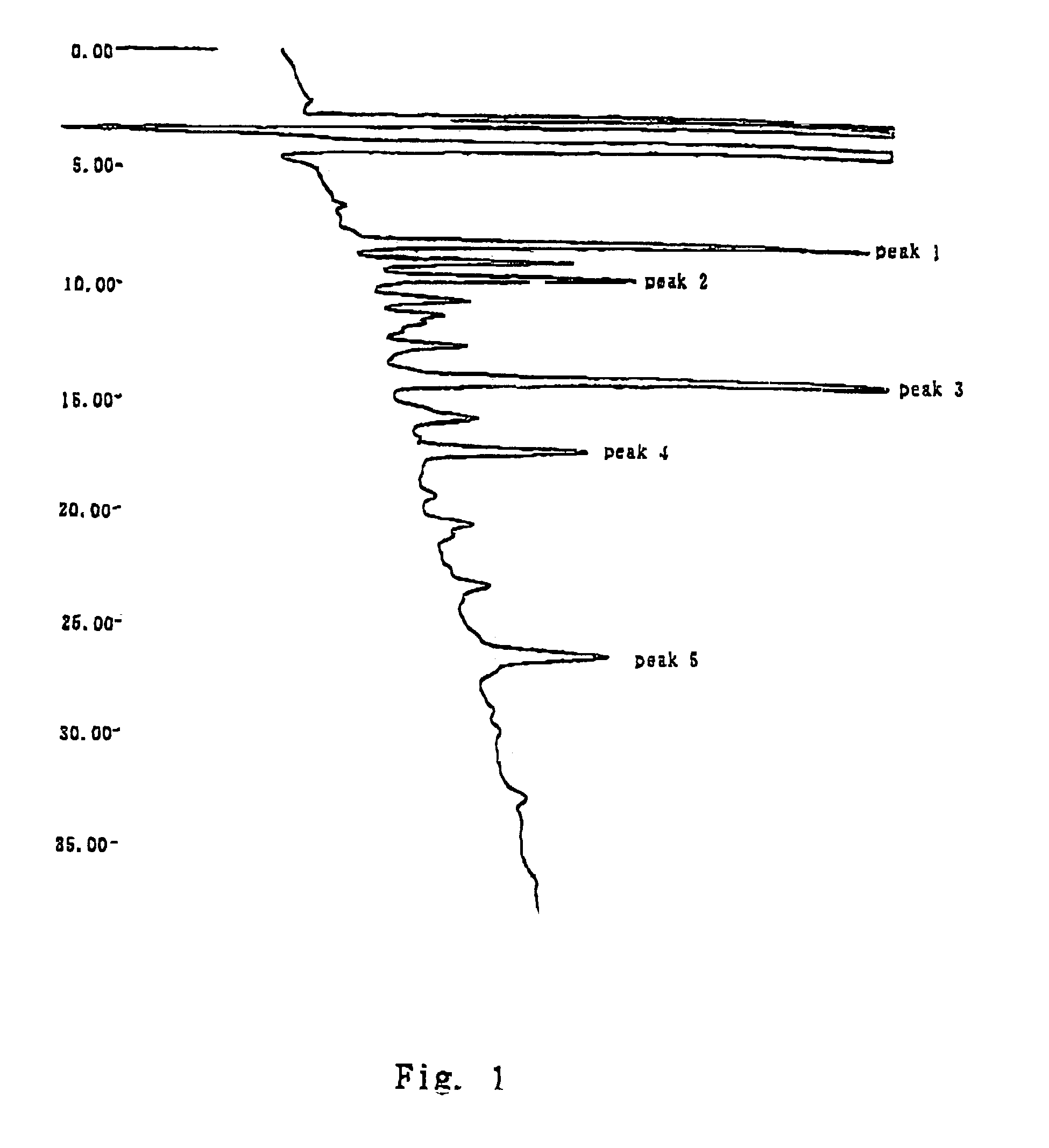Lipid and food compositions containing docosahexaenoic acid and docosapentaenoic acid
a technology of docosahexaenoic acid and lipids, which is applied in the direction of drug compositions, milk preparations, metabolic disorders, etc., can solve the problems of low content of desired fatty acids, inability to maintain a stable source of fish oil, and offensive odor of fish oil
- Summary
- Abstract
- Description
- Claims
- Application Information
AI Technical Summary
Benefits of technology
Problems solved by technology
Method used
Image
Examples
example 1
Production of Lipids Using Microorganisms Belonging to the Genus Ulkenia (1)
[0052]The Ulkenia sp. SAM 2180 and SAM 2179 strains were cultivated in a 5 liter (L) volume fermentor (jar fermentor) containing 3 L of medium having the following composition under the following culture conditions.
[0053]
(1) Medium composition1) Glucose (g / L):602) Potassium phosphate (g / L):33) Ammonium sulfate (g / L):24) Corn steep liquor (g / L):0.75) 50% Artificial sea water (L):16) pH:4.0(2) Culture conditions1) Culturing temperature (° C.):282) Aeration amount (VVM):0.53) Agitation rate (rpm):3004) pH Adjustment:maintained at pH 4 with 10% (w / v)sodium hydroxide and 1 M sulfuric acid
[0054]After cultivation, cells were collected by centrifugation and freeze-dried, then the amount (by weight) of cells per liter of medium was measured. Destruction of the cells and extraction of the lipids were then carried out by adding a mixture of chloroform / methanol (2:1, v / v) to the dried cells at a ratio of 100 volumes per...
example 2
Production of Lipids Using Microorganism Belonging to the Genus Ulkenia (2)
[0065]The Ulkenia sp. SAM 2179 Strain was cultivated in a 5 L volume fermentor (jar fermentor) containing 3 L of medium having the following composition under the following culture conditions.
[0066]
(1) Medium composition1) Glucose (g / L):602) Potassium phosphate (g / L):33) Ammonium sulfate (g / L):24) Magnesium chloride (g / L):1.35) Sodium sulfate (g / L):16) Calcium chloride (g / L):0.37) Corn steep liquor (g / L):0.78) pH:4.0(2) Culture conditions1) Culturing temperature (° C.):282) Aeration amount (VVM):0.53) Agitation rate (rpm):3004) pH Adjustment:maintained at pH 4 with 10% (w / v)sodium hydroxide and 1 M sulfuric acid
[0067]After cultivation, cells were collected by centrifugation and freeze-dried, then the amount (by weight) of cells per liter of medium was measured. Destruction of the cells and extraction of the lipids were then carried out by adding a mixture of chloroform / methanol (2:1, v / v) to the dried cells a...
example 3
Analysis of Lipids from Ulkenia sp. SAM 2179
[0072]Neutral lipids and polar lipids were separated from the lipids obtained in Example 1 by conventional liquid-liquid partition technique using hexan and 90% methanol. 0.92 g of neutral lipids and 0.05 g of polar lipids were obtained from 1 g of the lipids, respectively. The resulting neutral lipids and polar lipids were analyzed using thin-layer chromatography. Color development was accomplished by using sulfuric acid, then the identity of the resulting spots were confirmed by comparing their Rf values with those of standard lipids.
[0073]More than 90% of the neutral lipids were triacylglycerols. The polar lipids consist of phosphatidylcholine (60-80%), phosphatidylethanolamine (5-20%) and phosphatidylinositol (2-8%).
[0074]The triacylglycerols in the neutral lipids were further analyzed by separating molecular species on liquid chromatography (column: ODS column; mobile phase: acetone / acetonitrile (3:2); detection; differential refracto...
PUM
| Property | Measurement | Unit |
|---|---|---|
| concentration | aaaaa | aaaaa |
| concentration | aaaaa | aaaaa |
| volume | aaaaa | aaaaa |
Abstract
Description
Claims
Application Information
 Login to View More
Login to View More - R&D
- Intellectual Property
- Life Sciences
- Materials
- Tech Scout
- Unparalleled Data Quality
- Higher Quality Content
- 60% Fewer Hallucinations
Browse by: Latest US Patents, China's latest patents, Technical Efficacy Thesaurus, Application Domain, Technology Topic, Popular Technical Reports.
© 2025 PatSnap. All rights reserved.Legal|Privacy policy|Modern Slavery Act Transparency Statement|Sitemap|About US| Contact US: help@patsnap.com

